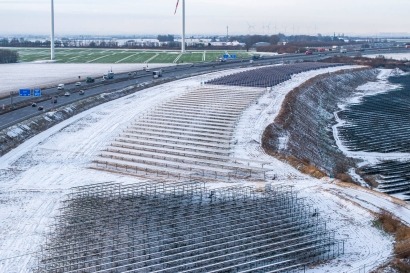
In the years ahead, important application research will be carried out at this site to show how solar power generation and agriculture can go hand in hand.
The first seedlings are to be planted in spring. The research activities, which are set to last at least five years, will also start then. The project’s goal is to develop suitable cultivation methods and value-adding operational concepts for Agri-PV systems.
The Institute for Plant Sciences at Forschungszentrum Jülich and the Fraunhofer Institute for Solar Energy Systems are providing scientific expertise for the project. The project is funded by the state of North Rhine-Westphalia as part of the progres.nrw program for climate protection and the energy transition.
The demonstration plant has a peak capacity of 3.2 MWs and consists of three technical Agri-PV concepts, which allow for both agricultural and horticultural use of the land. In the first configuration, the solar modules are fixed and mounted vertically on the supporting structure.
In the second concept, the modules are mounted on a movable axis which allows them to follow the course of the sun from east to west. This is designed to maximise the yield of the photovoltaic system.
Alfalfa, broad beans and forage grass are to be grown on these two areas during the first research year. Forschungszentrum Jülich has already started trialling broad beans at its Agri-PV research facility in Morschenich-Alt. These findings are to be incorporated into the application research in Bedburg.
In the following years, crops such as cereals, sugar beet, potatoes and other vegetables are to be cultivated. Between the module rows, there is enough space left for harvesting machines.
In the third solution, the photovoltaic modules are elevated on a substructure similar to a pergola. Under these modules, plants such as raspberries are to be cultivated. Over the years, the interplay between plant growth and photovoltaic technology will be monitored under a variety of seasonal weather conditions.
In the years ahead, important application research will be carried out at this site to show how solar power generation and agriculture can go hand in hand.

